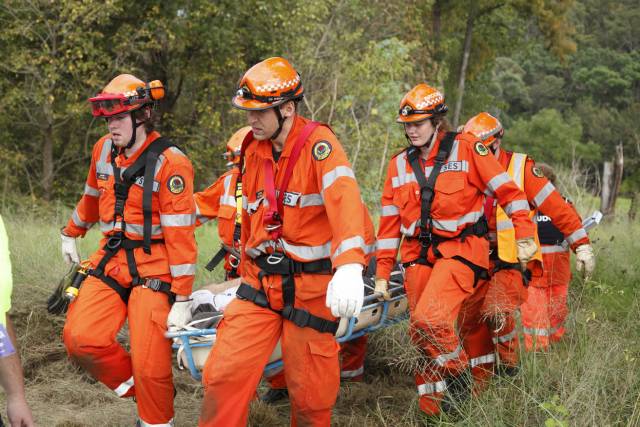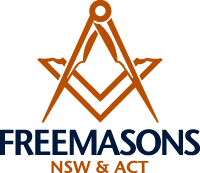
NSW State Emergency Service

Ready to Rescue!
Whether it be saving the life of a person stuck in flood water, chain-sawing through a large tree which has fallen onto someone’s home or rescuing a victim of a road crash, the volunteers of the New South Wales State Emergency Service (NSW SES) are always ready to come to the rescue.
The legislated combat roles for the NSW SES are response to storms and floods, including flood rescue, and also tsunami. Few people however appreciate the diverse supporting roles that the organisation undertakes in assisting other emergency service organisations and the community.
Of the 228 NSW SES Units located around the state, 76 are accredited Primary Rescue Units. This means they are the dedicated first response for road crash and general land rescues in their area. There are also 11 NSW SES Units with highly trained and well equipped Community First Responder teams which were established in partnership with the Ambulance Service of NSW to provide remote rural communities with an improved initial medical response.
Specialist vertical rescue teams can be found at 31 of the NSW SES Units. These primary response teams are on call to undertake rescue at heights and from depths under a range of conditions. Most Units also have accredited Flood Rescue personnel, including Flood Boat Operators and Swiftwater Rescue Technicians. All NSW SES volunteers are trained in General Rescue and First Aid.
The NSW SES assists the NSW Police Force with land search for missing persons and evidence searches, plus provides a variety of support roles to the NSW Rural Fire Service during bushfire operations. There is even a NSW SES Alpine Search and Rescue capability, and more recently the NSW SES Canine Unit has been established as part of the Urban Search and Rescue (USAR) Taskforce led by Fire & Rescue NSW.
This is in addition to the incident management roles – including logistics and equipment maintenance, communications and operational tasking, flood planning and intelligence gathering, media liaison, community education and many more.
Outdoors or indoors, there truly is a role for everyone in the NSW SES!
{gallery}news/NSW-SES{/gallery}Volunteers range in age from 16 up to 90 and come from all walks of life. They are bound together by a dedication to their community and as many will tell you – the thrill and challenges of assisting in emergencies.
Dave King, the Deputy Controller from the NSW SES Hawkesbury Unit, is just one of those people.
Dave’s passion for volunteering started in 1977 when he joined the NSW SES Gosford Unit as a 16 year old. ‘I was a pretty keen Venturer Scout and needed to join either the NSW SES or a Bushfire Brigade as a part of completing my Queen Scout Award and as soon as I got a taste for the NSW SES I loved it so much I never left.’
The NSW SES Hawkesbury Unit is a busy Unit north west of Sydney providing a General Land Rescue & Vertical Rescue capability to the Hawkesbury district, as well as maintaining traditional flood, storm and search roles. Although they haven’t had a ‘real’ flood since 1992, the Hawkesbury River provides one of the largest flood risks in Australia, with the Hawkesbury Unit maintaining a fleet of eleven flood rescue boats.
Large animal rescue is another area that Dave’s Hawkesbury Unit have been specialising in for many years now. Working in conjunction with equine vets and organisations such as the RSPCA, they have developed successful rescue techniques and training packages that they deliver through hands-on workshops.
Some 36 years on, Dave is still as passionate as ever as he trains and mentors new recruits to the Service, enthusiastically passing on his expertise and experience.
Speaking of recruiting, Dave is not the only member of the King family that has been drawn to the call of the orange. Dave’s wife Maureen and their two daughters Elizabeth and Alison, are often working side by side at the variety of rescues that Hawkesbury Unit attends. Be it a road crash rescue on the Bells Line of Road or a large animal rescue involving horses or cattle, a weekend rarely goes by without one of the family’s pagers going off and a quick dash out to a rescue.
For the King family and the other 10,000 NSW SES volunteers, the last three storm seasons have brought considerable work in the combat roles of flood and storm response. The widespread flooding across much of NSW saw many volunteers not only activated in their own home Region but often travelling to other Regions to assist – sometimes for weeks at a time. This out of area assistance extended to inter-state deployments assisting with the flooding in Queensland and Victoria and in the wake of Tropical Cyclone Yasi which impacted on Northern Queensland.
The broad range of training offered to the NSW SES volunteers makes them a very multi-skilled and versatile team. The NSW SES is a registered training organisation and has over 20 courses ranging from the basics of General Rescue, First Aid, and Storm and Water Damage, to more specialist skills including Chainsaw operation, Vertical Rescue, and Swiftwater Rescue Technician. These are conducted during the weekly training nights at the Units, or at venues such as Penrith Whitewater Stadium for the Swiftwater Rescue courses. Sometimes too, multi-agency exercises are undertaken with other emergency service organisations to practice response to large scale disasters.
Some volunteers go on to make emergency services a career, joining the 350 strong staff in one of the 17 Region Headquarters or in their State Headquarters located in Wollongong. Some too, join other emergency services such as the Police or Fire Services, where their rescue training and experience is highly valued.
The NSW SES is a dynamic organisation, ever evolving and adapting to the needs of the community. New members are always welcome – all that is required is a willingness to learn and be part of a team plus a ‘can do’ attitude!
For more information on becoming a NSW SES volunteer please go to: http://www.ses.nsw.gov.au/volunteering/
Article extracted from Freemason magazine, June 2013, pages 16 and 17.


